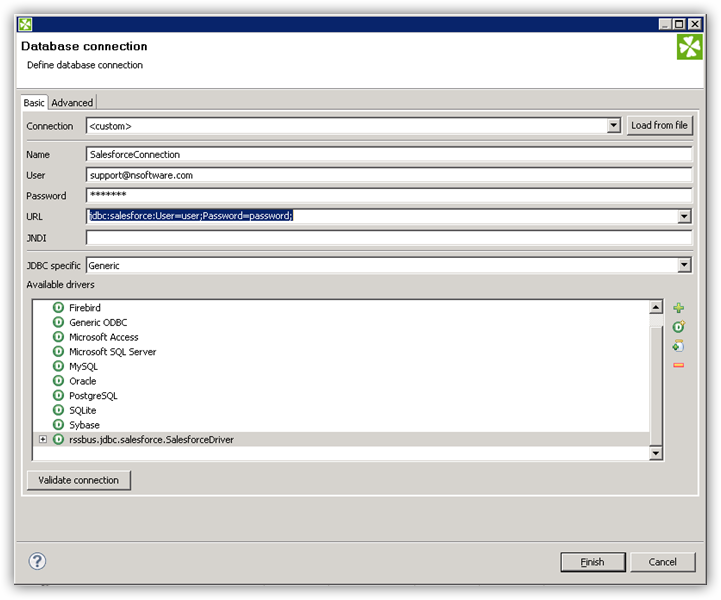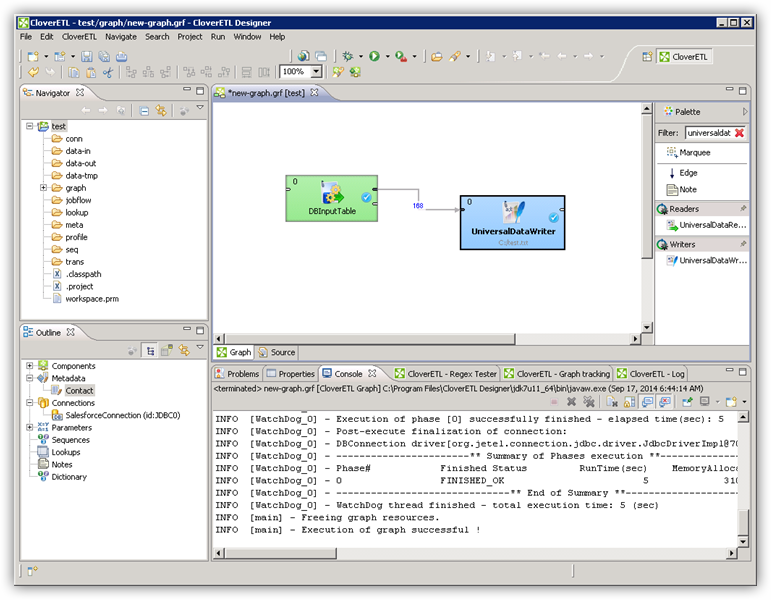Discover how a bimodal integration strategy can address the major data management challenges facing your organization today.
Get the Report →Connect to Adobe Analytics Data in CloverDX (formerly CloverETL)
Transfer Adobe Analytics data using the visual workflow in the CloverDX data integration tool.
The CData JDBC Driver for Adobe Analytics enables you to use the data transformation components in CloverDX (formerly CloverETL) to work with Adobe Analytics as sources. In this article, you will use the JDBC Driver for Adobe Analytics to set up a simple transfer into a flat file. The CData JDBC Driver for Adobe Analytics enables you to use the data transformation components in CloverDX (formerly CloverETL) to work with Adobe Analytics as sources. In this article, you will use the JDBC Driver for Adobe Analytics to set up a simple transfer into a flat file.
Connect to Adobe Analytics as a JDBC Data Source
- Create the connection to Adobe Analytics data. In a new CloverDX graph, right-click the Connections node in the Outline pane and click Connections -> Create Connection. The Database Connection wizard is displayed.
- Click the plus icon to load a driver from a JAR. Browse to the lib subfolder of the installation directory and select the cdata.jdbc.adobeanalytics.jar file.
- Enter the JDBC URL.
Adobe Analytics uses the OAuth authentication standard. To authenticate using OAuth, you will need to create an app to obtain the OAuthClientId, OAuthClientSecret, and CallbackURL connection properties. See the "Getting Started" section of the help documentation for a guide.
Retrieving GlobalCompanyId
GlobalCompanyId is a required connection property. If you do not know your Global Company ID, you can find it in the request URL for the users/me endpoint on the Swagger UI. After logging into the Swagger UI Url, expand the users endpoint and then click the GET users/me button. Click the Try it out and Execute buttons. Note your Global Company ID shown in the Request URL immediately preceding the users/me endpoint.
Retrieving Report Suite Id
Report Suite ID (RSID) is also a required connection property. In the Adobe Analytics UI, navigate to Admin -> Report Suites and you will get a list of your report suites along with their identifiers next to the name.
After setting the GlobalCompanyId, RSID and OAuth connection properties, you are ready to connect to Adobe Analytics.
Built-in Connection String Designer
For assistance in constructing the JDBC URL, use the connection string designer built into the Adobe Analytics JDBC Driver. Either double-click the JAR file or execute the jar file from the command-line.
java -jar cdata.jdbc.adobeanalytics.jarFill in the connection properties and copy the connection string to the clipboard.
![Using the built-in connection string designer to generate a JDBC URL (Salesforce is shown.)]()
A typical JDBC URL is below:
jdbc:adobeanalytics:GlobalCompanyId=myGlobalCompanyId; RSID=myRSID; OAuthClientId=myOauthClientId; OauthClientSecret=myOAuthClientSecret; CallbackURL=myCallbackURL;

Query Adobe Analytics Data with the DBInputTable Component
- Drag a DBInputTable from the Readers selection of the Palette onto the job flow and double-click it to open the configuration editor.
- In the DB connection property, select the Adobe Analytics JDBC data source from the drop-down menu.
- Enter the SQL query. For example:
SELECT Page, PageViews FROM AdsReport WHERE City = 'Chapel Hill'
Write the Output of the Query to a UniversalDataWriter
- Drag a UniversalDataWriter from the Writers selection onto the jobflow.
- Double-click the UniversalDataWriter to open the configuration editor and add a file URL.
- Right-click the DBInputTable and then click Extract Metadata.
- Connect the output port of the DBInputTable to the UniversalDataWriter.
- In the resulting Select Metadata menu for the UniversalDataWriter, choose the AdsReport table. (You can also open this menu by right-clicking the input port for the UniversalDataWriter.)
- Click Run to write to the file.








